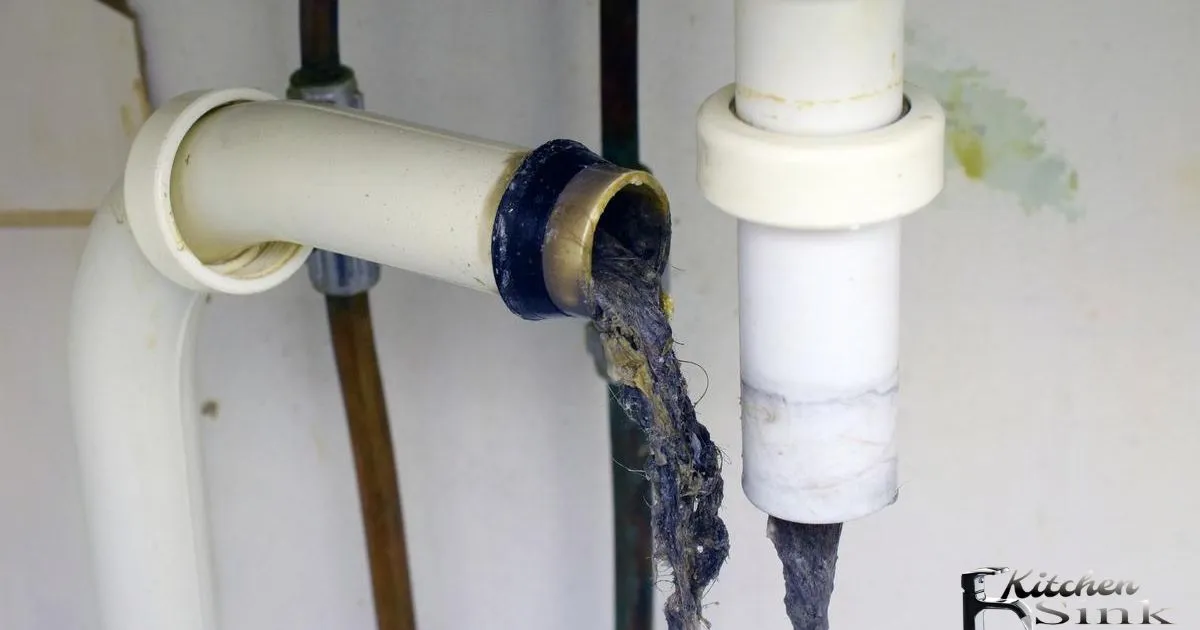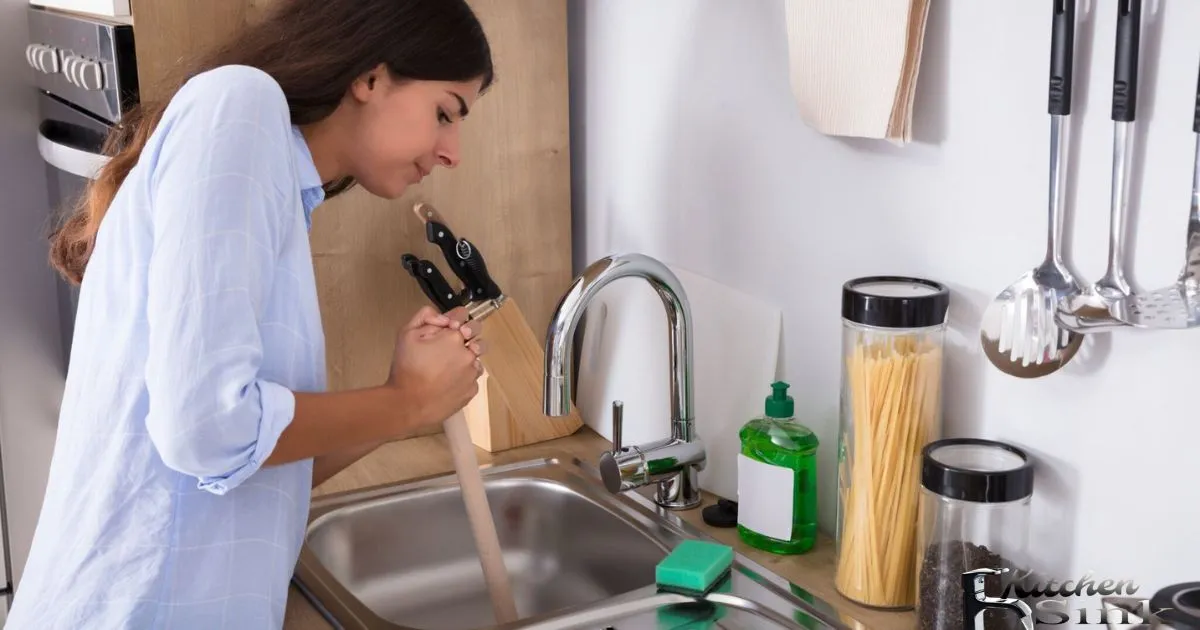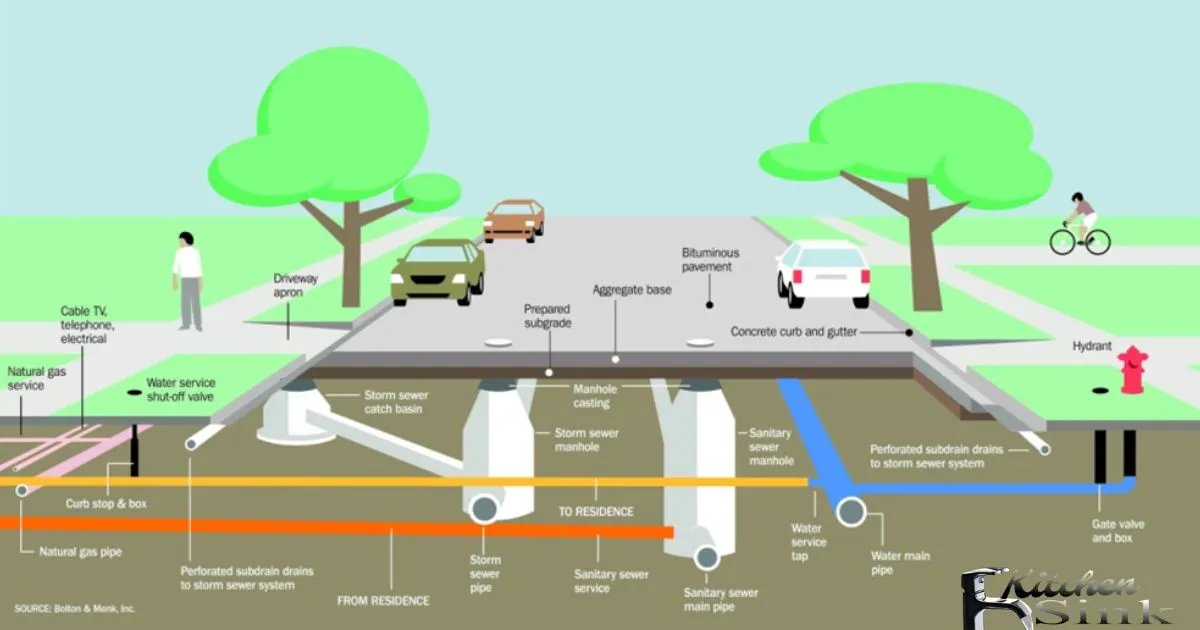The path that waste water takes from a home to the sewer system or septic tank is often mysterious to homeowners. When a clog or leak springs up, one of the first questions we wonder is “Where do my drains connect?” Understanding the basics of household plumbing can help troubleshoot problems and know what to expect during repairs.
Most modern homes have a main sewage pipe that leads from the home to the municipal sewer line or private septic system. This main drain line is usually buried underground and runs on a decline so that waste water flows down and out. Along its path are connection points where drain pipes from sinks, showers, tubs, and other fixtures link up.
So in most homes, yes, the kitchen sink drain connects to the same sewage pipe as the bathroom fixtures. Tracing the path of pipes through walls and floors shows how they converge at the main sewer pipe before exiting the home. When one drain clogs, it can back up through connecting drains. Knowing the layout can help locate the original source of blockages. Some key areas for clogs include the kitchen sink trap, main sewer cleanout, and septic tank inlet.
Household Drainage Systems Work
The main waste pipe, also called the soil stack or sewer lateral, carries all drainage from bathrooms, kitchens, laundry rooms and more out of the home. Branch drain lines tie into the main line at connection points.
Key Components of House Drainage Systems
- Main Sewer Pipe: 4-6 inch diameter pipe sloped to flow out of home to municipal sewer or private septic field
- Branch Drain Lines: Connect fixtures like sinks, toilets and tubs to the main line
- Vents: Allow air flow to prevent vacuum pressure in pipes
- Traps: Curved pipes below drain openings that hold water to prevent sewer gas from entering
- Cleanouts: Access points for clearing blockages
Following the Flow from Fixtures to Main Line
Understanding the path drains take helps locate clogs. For example:
- Kitchen sink drain line flows into main pipe under the house
- Main pipe leads to septic tank or municipal sewer line
- Bathroom sinks tie in upstream or downstream from kitchen
- If kitchen clogs, bathroom sinks can back up
Knowing the connections helps interpreters blockage locations and sources.
Can A Toilet And Kitchen Sink Share The Same Drain
A toilet has its own drain line. This line carries wastewater out of the home. The kitchen sink also has a dedicated drain line. This line transports food particles, grease, and dirty dishwater. It is best if these two drain lines remain separate.
Connecting the kitchen sink and toilet to the same drain has risks. Drain clogs could occur from mixing waste streams. The toilet could back up if the Clean Composite Sink Kitchen clogs. Venting issues might also happen. Different fixtures need distinct vent setups. For these reasons, plumbing codes prohibit toilet and sink connections. Separate drains prevent problems.
Locating Clogs and Blockages
When one drain clogs, connected fixtures can also back up and overflow. Tracing back to the original blockage saves extensive repairs.
Start by Checking Key Problem Areas
- Kitchen sink trap: Disassemble under sink to check
- Main cleanout: Outside access to main drain line
- Septic tank inlet: Clogs prevent waste from entering
Then work backwards towards the clogged fixture. Check connections in walls and floors by removing access panels if needed.
Critical Clue – Which Drains are Affected?
- Clogged kitchen sink only – trap or line to main is blocked
- Kitchen and bathroom sinks back up – clog further down the main line
- All drains slow – big clog at exit point or sewer line
Process of elimination helps narrow down locations.
Unclogging Tips
- Use zip-it cleaning tools and plungers first
- Remove cleanout plugs to inspect and snake main lines
- Call a professional for deep, extensive or septic clogs
Early detection before backups worsen prevents greater damage.
Planning For Repairs
When major drain repairs are needed, contractors follow the piping connections to pinpoint problem areas.
Accessing Drain Lines
Lines are usually buried under floors and inside walls. Access means some demolition work.
- Kitchen sinks: Open walls behind cabinets to expose drain connections
- Main line and vents: Access where they leave the home
- Septic lines: Uncover distribution box and pipes to leach field
Wall and floor repair is often needed afterwards.
Shared Drain Considerations
With shared bathroom and kitchen branches:
- Fixing one drain requires disturbing them all
- Save on costs by addressing other issues at the same time
Look for root intrusions, leaks, misalignments and other defects during repairs.
Repiping Whole House
For extensive corrosion and clogs:
- Complete repiping is faster with fewer access points
- Updated materials prevent future issues
- Costs more upfront but avoids continual spot repairs
Get quotes on both spot repairs and whole house replumbing.
Kitchen Sink Drain Plumbing Diagram
A kitchen sink drain has several parts. These parts work together to remove water. Understanding them helps with repairs.
Here are the main components:
| Part | Description |
| Tailpiece | Connects sink to trap |
| Trap | Curved pipe with water seal |
| Drain arm | Carries water to main line |
| Main line | Large pipe to sewer/septic |
Water flows from the sink tailpiece to the trap. The trap holds water to block gases. After the trap, water enters the drain arm. This pipe connects to the main sewer drain line. Following this path helps find and fix clogs. Knowing the parts aids DIYers during installations. With proper slope and connections, drains remove water smoothly.
Preventing Future Drainage Problems
While some clogs come on suddenly, many result from long term pipe wear and tear. Prevention is more affordable.
Routine Maintenance
- Monitor sinks for slow drainage
- Annual drain cleaning service
- Fix drips and leaks early
- Ensure vents aren’t blocked
- Pump septic tanks on schedule
Catching minor problems early reduces risk of major backups.
Install Hair Catchers
- Strainers trap hair and debris before entering pipes
- Easy to clean out mesh catchers
- Position under all bath and sink drains
- Reduces buildup inside pipes over time
Update Old Piping
- Replace galvanized, clay and iron pipes
- Ensure proper slope for drainage
- Use smooth PVC for reduced clogs
- Install cleanouts for easy access
Replacing dated pipes avoids leaks and corrosion.
Proper maintenance keeps water flowing freely through household drainage systems for years. Understanding how fixture drains connect equips homeowners to locate and prevent problems. With some preventive measures, costly backups and repairs can often be avoided.
Kitchen Sink And Bathroom Sink Connected
The kitchen sink drain removes food debris and grease. The bathroom sink drain takes away things like hair and soap scum. Both fixture drains flow wastewater out of the home. It is common for them to connect to the main sewer pipe.
Sharing a drainage line is typical in modern homes. The drains tie together before reaching the main sewer. This allows multiple fixtures to funnel waste at one exit point. Proper venting prevents vacuum pressure with shared drains. Following drain connections helps locate clogs. Knowing the layout also aids repairs. Overall, combining fixture drains causes few issues with proper installation.
Frequently Asked Question
Do kitchen and bathroom drains connect?
Yes, in most homes the sinks drain to the same pipe.
Where does the main sewer line start?
The main line begins where drains combine to exit the house.
Why do drain clogs back up other fixtures?
When one drain line gets blocked, connected sinks can overflow.
How are drain pipes laid out?
Pipes run downhill, tying together before reaching the main sewer line.
What causes gurgling drains?
Gurgling or bubbling drains result from improper venting or clogged vents.
Conclusion
In most modern homes, the kitchen sink and bathroom pipes connect before reaching the main sewer line. While starting as separate drains, they combine downstream to funnel all waste outside efficiently. Shared drainage systems are common and meet code when properly installed.
Understanding household plumbing layouts helps trace issues back to their source. Catching clogs early prevents backups and overflows into other areas. Regular maintenance like hair catchers further reduces drain clogging risks. Though not obvious, kitchen and bathroom plumbing connects more often than homeowners may think. Knowing the paths drains take is useful for preventing problems and making informed repairs when needed.



